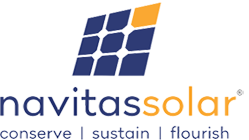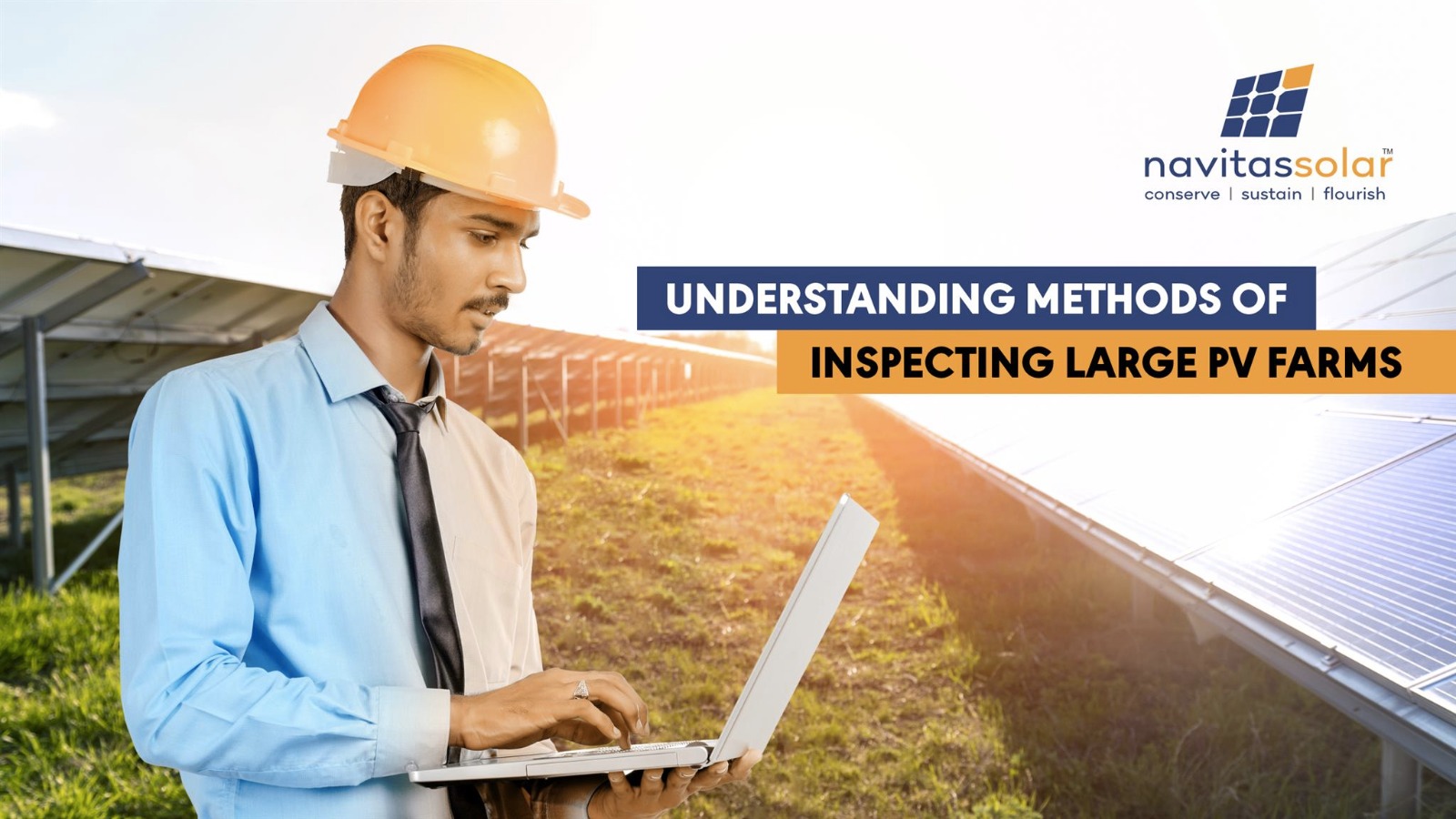Understanding Methods of inspecting large PV Farms
As a leading manufacturer and provider of total solar power solutions, we at Navitas Solar believe that knowledge sharing is the key to ensure better awareness towards clean sources of energy.
Photovoltaic (PV) farms are large-scale solar power plants that generate renewable electricity by converting sunlight into electrical energy. With the increasing adoption of renewable energy, PV farms are becoming common, and it is essential to ensure efficient and optimal operation of these farms. Regular inspections and maintenance are required to identify and correct any issues that may affect the farm’s performance. In this report, we will discuss the various methods of inspecting large PV farms.
Aerial Inspections:
Aerial inspections are one of the most efficient and effective methods of inspecting large PV farms. This method involves using drones or manned aircraft to carry out inspections. Aerial inspections provide a quick and comprehensive assessment of the farm’s condition and help identify potential issues or defects in the solar panels or other equipment. Drones are becoming increasingly popular for aerial inspections as they can collect high-resolution imagery, which can be used to detect issues such as shading, panel defects, or debris accumulation. This type of inspections are Quick and does the comprehensive assessment of the farm’s condition. It helps to Identify potential issues or defects in the solar panels or other equipment. But it Requires a skilled pilot to operate the drone or aircraft and Adverse weather conditions may affect the accuracy of the imagery collected.
Ground-based inspections:
Ground-based inspections involve physically inspecting the solar panels, wiring, and other components of the PV farm. This method is more time-consuming and requires a larger workforce, but it is more accurate than aerial inspections. Ground-based inspections are usually carried out by trained personnel who use specialized equipment to identify any defects or issues that might affect the performance of the PV farm. This method is More time-consuming than aerial inspections and requires a larger workforce.
Thermal imaging:
Thermal imaging is a non-destructive testing method that uses infrared technology to detect changes in temperature on the solar panels’ surface. This method is particularly useful in identifying hotspots that might indicate defective or damaged solar cells. Thermal imaging can be carried out using handheld devices or drones equipped with thermal cameras. This method Requires specialized equipment such as thermal cameras and it is Not effective in identifying issues that may be internal to the solar panel.
Performance monitoring:
Performance monitoring involves tracking the energy output of the PV farm to ensure that it is operating at maximum efficiency. This method involves collecting data on the farm’s output and comparing it to expected values. Performance monitoring can be carried out using specialized software, which can track the farm’s energy output and identify any issues or defects that might be affecting performance. This method Requires specialized software to track the farm’s energy output and it Cannot identify issues or defects in individual solar panels.
Electroluminescence (EL) imaging:
EL imaging is a non-destructive testing method that uses a specialized camera to capture images of the solar cells’ internal structure. This method is particularly useful in identifying defects or damage to the solar cells that might affect their performance. EL imaging can be carried out using specialized equipment, and the images captured can be analyzed to identify any issues or defects. The method Requires specialized equipment such as an EL imaging camera.
We must consider that these are the most recent methods of efficiently inspecting large PV farms, but each inspection technique has its own applications, advantages, and downsides. In recent years, however, the whole solar sector has adopted drone thermography as the gold standard for sustaining solar assets.


 Online | Privacy policy
Online | Privacy policy
Related Posts
You May Also Like
Bonito Series: Driving Innovation in…
Read MoreTOPCon Series: The Next Generation…
Read MoreValuable Points to Remember During…
Read MoreNavitas Planet Partners with Hysolwin…
Read MoreDriving Towards a Sustainable Future:…
Read MoreWhy Do Top-Grade EVA Sheets…
Read MoreBonito Series: Driving Innovation in…
Read MoreTOPCon Series: The Next Generation…
Read MoreValuable Points to Remember During…
Read MoreNavitas Planet Partners with Hysolwin…
Read MoreDriving Towards a Sustainable Future:…
Read MoreWhy Do Top-Grade EVA Sheets…
Read MoreBonito Series: Driving Innovation in…
Read MoreTOPCon Series: The Next Generation…
Read MoreValuable Points to Remember During…
Read MoreNavitas Planet Partners with Hysolwin…
Read More